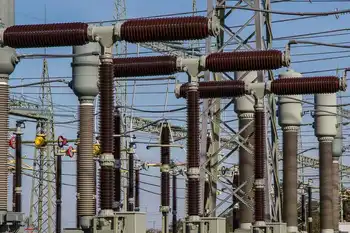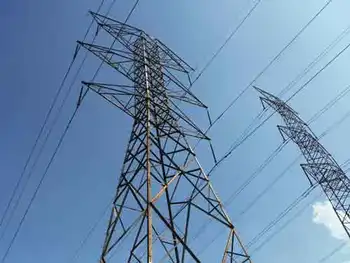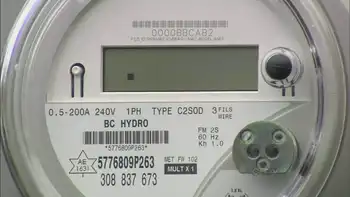Auto lovers more excited over green EVs
By CanWest News Service
NFPA 70b Training - Electrical Maintenance
Our customized live online or in‑person group training can be delivered to your staff at your location.

- Live Online
- 12 hours Instructor-led
- Group Training Available
Those who love the sounds and power of gas-powered American muscle don't even want to peek at that prospect, while others, prodded on by government input, say it's the only way for the automobile to survive.
But many experts concede there is no single “silver bullet” - not even pure electric vehicles - that will solve issues such as minimizing the impact on our environment and reducing dependency on global oil resources while supplying practical products to meet consumers' wide range of transportation requirements. That's why automotive engineers are taking a multi-pronged approach to these challenges, including fuel cells, advanced hybrid systems, alternative fuels and even more efficient internal combustion engines.
Still, the concept currently grabbing the most attention is the electric “plug-in” powertrain and this technology, which emits zero emissions and can be regenerated by simply plugging in to a household electrical receptacle, holds considerable promise in several applications - especially for urban driving and short-range commutes.
Already, there are vehicles powered by rechargeable battery-based systems on the road for evaluation and a few are scheduled to soon be offered for public sale. The most visible example is the Chevrolet Volt, which combines plug-in technology and a small gas-powered engine that extends the car's range by generating electricity to recharge the battery. While General Motors has yet to nail down a firm sale date, the hype stirred up by the Volt has spawned a greater awareness of plug-ins.
Mitsubishi Motors intends to offer a pure plug-in electric car for public sale this summer. The four-passenger i MiEV (for Mitsubishi Innovative Electric Vehicle) commuter car will initially be available in Japan, Mitsubishi's homeland market, although the company intends to expand the i MiEV's availability to other markets, including Canada.
As a way of demonstrating the car's capabilities to Canadians, Mitsubishi has committed an i MiEV for evaluation in BC Hydro's fleet, with another heading for regular use in the City of Vancouver's fleet. These zero-emission, highway-capable electric cars are expected to be on B.C. roads as early as November, with additional cars to be added to the fleets as they become available.
The i MiEV is built on an existing platform used for the gas-powered Mitsubishi i car, a very successful model in Japan. The conventional engine, transmission and fuel tank have been replaced by an advanced 330-volt lithium- ion battery, electric motor and onboard charging system. The battery, installed under the rear seat, powers a 63-horsepower electric motor located ahead of the rear axle.
The i MiEV is capable of travelling up to 120 kilometres on a single charge, and when a recharge is necessary, it can be plugged into a standard 110- volt wall socket or a 220-volt receptacle typically used for appliances such as a laundry dryer. It takes about 14 hours to bring the battery back up to full charge using the 110-volt circuit - plugging into the higher voltage outlet cuts the recharge period to about six hours. There's also a fast-charge connector that allows the battery to reach 80 per cent of its capacity in just 30 minutes.
In addition to providing decent interior room for four adults, as well as cargo space, the i MiEV quietly delivers excellent low-speed acceleration, thanks to the immediate peak torque available from the electric motor. And, with the weight of the battery pack and motor located so low in the chassis, the car is said to have impressive handling and stability.
Nissan, too, has a pure electric car on the horizon. A prototype “test mule” was available for auto journalists to take some laps around the company's test track in Yokohama, Japan, and the results were impressive. Nissan's EV-01 (for Electric Vehicle), a four-door sedan, quickly dispelled the prevailing perception that electric cars aren't capable of anything beyond urban commuter duties. This car ripped up to a speed that would leave stoplight challengers scratching their heads - and it could keep on accelerating up to 160 km/h. The only thing missing was engine noise and gear changes - it simply rushed forward with a quiet, steady force that pinned you back in the seat.
The EV-01 would satisfy sporty types, too, as it tackled the twists and turns of the circuit with the enthusiasm of a compact sport sedan, again demonstrating going green doesn't mean giving up driving fun.
The test car's range is reported to be 160 km, though Nissan engineers say running flat out will reduce that distance by about 20 km. Like the Mitsubishi car, the EV-01 can be recharged overnight using a conventional 110-volt outlet; higher-voltage circuits reduce the recharge time significantly and there's also a fast-recharge capability.
Nissan plans to have the EV-01's all-electric powertrain packaged in a uniquely styled vehicle when it's introduced to the North American market next year.
As further proof battery-powered cars don't have to lack the muscle some folks love, an innovative drag racer in Portland, Ore., has fitted his 1972 Datsun 1200 with a lithium-ion-based, all-electric powertrain that enables this 860-kilogram, two-door sedan to routinely blow the doors off conventionally powered, high-performance cars. John Whelan's street-driven White Zombie consistently posts quarter-mile times at the local drag strip in the 11-second range at nearly 180 km/h.
Still, the biggest issue engineers continue to tackle is battery technology.
Engineering small, efficient electric motors with sufficient power output is doable; developing a battery pack that is compact enough to fit in a practically sized vehicle while still delivering decent range and performance is a greater challenge. Look at the heavy, bulky, metal-based batteries in current hybrids and you'll understand the issue - and these systems are designed to only be partially responsible for powering the vehicle.
Promising advances in lithium-ion battery technology, however, are helping make pure plug-in cars a reality. These batteries, using the same electricity- producing technology you'll find in many cellphones, deliver more juice, sustain that source of power longer and are more compact in size than current lead and nickel-based cells.
The i MiEV's battery pack, for example, consists of 22 modules, each containing four cells that can be installed in either a vertical or horizontal position. The proprietary lithium-ion batteries, purpose-built for automotive applications, are being produced by Lithium Energy Japan, a joint venture involving GS Yuasa, Mitsubishi Corporation and Mitsubishi Motors.
Nissan, too, has been working on a joint venture with Japanese electronics giant NEC to develop high-output lithium-ion battery packs. Those efforts have already resulted in battery technology advances that produce twice the power of current lithium-ion cells, yet are half the size.
Experts say even more breakthroughs are on the horizon, making the battery packs more compact for easier packaging in vehicles while also delivering the extended range required to make plug-in electrics a practical alternative to conventionally powered vehicles.











